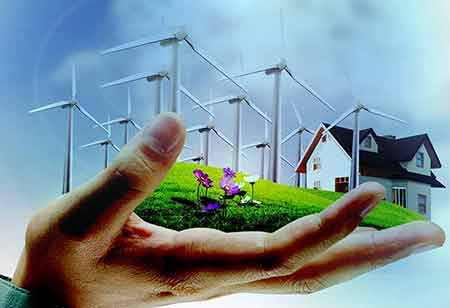Thank you for Subscribing to Energy Business Review Weekly Brief
How Defines Optimal Temperature In A Data Center?

By
Energy Business Review | Thursday, January 06, 2022
Stay ahead of the industry with exclusive feature stories on the top companies, expert insights and the latest news delivered straight to your inbox. Subscribe today.
Optimizing a data center makes the facility appealing to clients, more agile, and less prone to downtime and other benefits.
FREMONT, CA: Common issues in optimizing data centers enclose providing too little or too much air, excessively dry or moist air, too cool or too warm, or air conditions that vary from one corner of the data center to another. IT managers often implement excess cooling that wastes energy to overcome this situation.
Data centers can be optimized by implementing better management strategies to conserve energy and money.
A few methods of optimizing Data centers are
Non-raised floor cooling
Cooling systems placed near the rack can improve cooling performance and efficiency without a raised floor, and this technique can be used as a complete solution or as an addition to a cooling system.
Close-coupled cooling advancements
Cooling systems have been developed to shorten the air travel distance from the racks to the cooling unit. These systems can reduce cooling costs with the required infrastructure by using less power to move air and minimizing hot and cold air mixing.
Liquid-cooled servers
Water has a greater thermal conductivity when compared to air. Hence, a cooling water system helps the processor run at high processor speeds while keeping the system noise and temperature low.
The liquid cooling system allows water to circulate through a small pipe inside a heat sink attached to the processor. As the liquid flows through the tube, heat generated by the processor is transferred to the drink. Next, the warm liquid flows through the pipe to a radiator, where the surplus heat is discharged into the ambient air outside the system. Finally, the cooled liquid circulates through the line to the processor to continue the cooling process.
Blanking panels
Using blanking panels is the simplest, most cost-effective, and most misunderstood method to improve cooling efficiency. It guarantees that the warm air from behind the rack cannot be drawn back into the front of the frame through open rack spaces, which will immediately improve efficiency.
Cable management
Cluttered cables impede the airflow and cause the servers to run hotter than necessary. Lines should be laid together and tightly bundled to minimize airflow effects.
Floor tiles & vents
The size, position, shape, and direction of floor vents influence how much cool air is delivered. Therefore, a careful evaluation of the placement and the airflow to the highest power-consuming racks will be useful.
Synchronizing your computer room air conditioning (CRAC)
In several data centers, each CRAC doesn’t communicate with other CRAC. Each CRAC bases its humidity and temperature setting on the moisture and temperature sensing in the warm air. One CRAC can cool or humidify the air while another CRAC tries to dehumidify and reheat the air. Resolving this can save energy and decrease pressure on the CRACs.
Conducting a Thermal survey
A thermal survey may give significant insights and solutions to improve efficiency.






